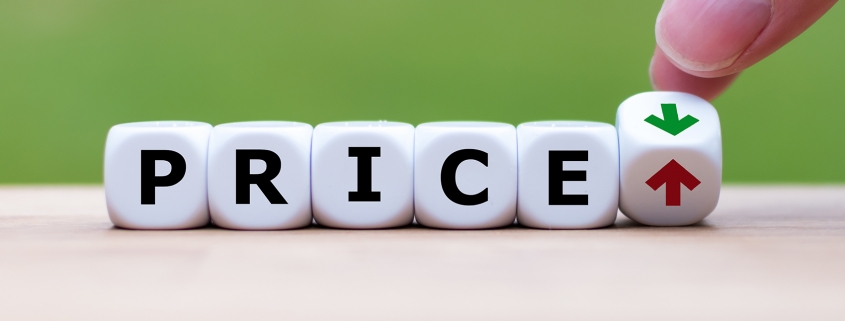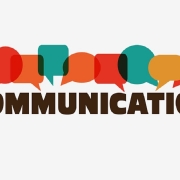Price Increases & Why You Should Tell Your Customers
Covid restrictions are lifting in some parts of the world and the economy is booming in some sectors. Some labour and material costs are rising due to shortages, as is customer demand. Many brands have a high pricing power at the moment, making price hikes almost inevitable. Brand managers may be clued in on the size of their price increase, but it’s no easy matter to communicate this unwelcome news to customers.
Many companies, and even entire industries, routinely raise prices without ever telling customers. In the consumer-packaged goods space, for instance, it is common practice to reduce quantity (the grammage of a package, item count, etc.) and maintain the price. This increases the per-unit amount paid by shoppers but keeps the more visible package price unchanged. Alternatively, brands may cut down on trade promotions and other forms of discounting, raising prices indirectly. For instance, when faced with a shortage and soaring prices for chicken, KFC recently removed in-store promotions for its crowd-pleasing $30 fill-up bucket.
Whatever the reason for your price increase, how you communicate the news is just as important as planning the increase itself. Your communications need to provide clients with detailed information, address questions and concerns, and reinforce your value as their chosen service provider.
However, these below-the-radar options are unavailable for products sold with subscriptions, leases, or contracts. In these cases, the manager must communicate to customers that prices have increased before the next billing cycle. This task is mined with pitfalls. When performed poorly, the news can lead to undesirable outcomes like customer complaints, social media outrage, and even worse, having to walk back the price increase, or losing customers altogether.
To avoid such fiascos and to blunt customer resentment, here are three actions that managers should take when communicating a price increase. They are backed by evidence found in academic research and shared experiences from working with companies.
Call the action what it is: a price increase
In emails and letters to customers, well-loved brands such as Netflix, Microsoft, Sling, and YouTube TV have all referred to a price increase as “updating price” or “adjusting price” in the past. This is common practice because managers are naturally reluctant to tell customers they are raising prices. While this may seem like a small thing, euphemistic messaging can cause serious harm, fraying the relationship with loyal customers. Decades worth of consumer psychology research has consistently found that attempts to obfuscate bad news rarely pay off for brands. Customers know that brands are trying to influence their opinions and behaviour and appreciate it when they use helpful, transparent, and informative influence methods.
Authenticity and honesty matter to customers, especially for bad news. When a brand uses a euphemism to convey a price increase, it does not distract customers or dilute the negative impact of the news, as managers may believe. Instead, it arouses suspicion, making recipients more vigilant and critical of the information contained in the announcement. Some customers may interpret the euphemistic phrasing as talking down to them. It may stoke indignation in others, leading to venting on social media and the potential to snowball into widespread anger. Even customers who are on the brand’s side may feel that they are being deceived. Where communicating price increases, it is best to call it what it is: a price increase.
Avoid apologising & over-explaining
Increasing prices is a standard part of running a growing business, and enables a company to continually provide better services over the long term. Rate fluctuations naturally follow a company’s growth plan. Nobody can grow by staying static. While it can be tempting to provide long-winded explanations and apologies for increasing your rates, giving too much information can take away from the key message you’re trying to communicate and ultimately confuse your clients. In addition, apologising could send a signal that the price increase will negatively impact your clients and/or that you’re not confident in the increased value you’re providing.
When communicating a price increase to customers, ensure that your messaging only contains essential information and avoid adding unnecessary details. Don’t be afraid to own your decision!
Offer plenty of advance notice
Although price increases are an expected part of doing business, it is important to give your clients sufficient time to process the information and potentially look at other service providers offering lower or competitive rates. (Depending on the significance of the increase, your clients may be required to secure additional approval or funding to continue to do business with you – especially if the business is facing challenges.)
To help your clients feel valued and give them time to make any necessary changes on their end, provide as much notice as possible before the price increase will come into effect. If you’re able to provide a few months’ notice, consider following up with a reminder closer to the effective date (either via email or over the phone) so the price change – and any consequential business changes – doesn’t turn into a last-minute disaster.
Prove that the Price Increase Is for the Customers
The most effective price increase communications are customer-centric. They provide a value narrative — a vivid and compelling story for why the price is being increased that focuses on customer value. As an example, when United Airlines raised prices of its United Club membership, the company provided this explanation:
“To provide a more productive and relaxing experience, we’re investing more than $100 million in renovating existing locations and building new spaces with expanded seating areas, more power outlets and upgraded Wi-Fi. We’re also investing in a brand new complimentary food menu that you can now find at most of our hub locations across the U.S. and will be available soon at the rest of our locations.”
This explanation tells United Club members that prices are increasing to give them more benefits they’ve been asking for. A compelling value narrative establishes the sequence of actions for the price increase. It starts with customer feedback, then leads to identifying unmet needs, is followed by a significant investment by the brand, which results in new features, and finally culminates in the delivery of benefits that customers value.
As the United Airlines communication illustrates, the value narrative is concise — only a few sentences long. But it provides a credible explanation for the price increase that resonates with core customers. Most importantly, it places the customer at the centre of the price increase story, linking the price increase to substantial added customer value. A well-crafted value narrative conveys to customers that the brand has undertaken the effort to understand how its customers derive value and factored this knowledge into the pricing process.
At its essence that managers should approach the unpleasant task of communicating a price increase to customers with the same degree of sincerity, attention to detail, and customer focus that they bring to other brand-building projects like introducing new features or extending product lines. Such effort will be rewarded with a price increase that sticks and customers that feel like valued partners of an authentic brand with their interests in mind.
Given our current situation knowing that your colleagues or employees are best suited for this new scenario we find ourselves in. Finding the right talent, the best fit for the job and your organisation can be a very challenging task. It is now important to find out whether your managers or your team is well-equipped of working together from various locations. It requires deep knowledge of their personalities, strengths, weaknesses, interests, work style and other characteristics. Our technology and solutions will do the work for you, helping you discover if your people are resilient during times of hardship, if they are autonomous, if they are team players, without actual human contact. Given that our platform is cloud-based, everyone can use it from home as well. Humanity finds itself at a crossroad for various reasons now, why not help people discover and develop themselves from the comfort of their own homes?
Request a free demo:

Sources:
https://www.thebalancesmb.com/how-to-sell-a-price-increase-to-your-customers-2948463
https://www.workflowmax.com/blog/youve-decided-to-raise-your-rates-now-how-do-you-tell-your-clients
https://hbr.org/2021/06/if-youre-going-to-raise-prices-tell-customers-why











